Do you have a question about the Triumph Tiger Explorer and is the answer not in the manual?
Explains the meaning of warning, caution, and note symbols used in the handbook.
Illustrates the locations of various warning labels on the Tiger Explorer motorcycle.
Diagram and list identifying key external parts of the motorcycle.
Details the location of the Vehicle Identification Number (VIN) and Engine Serial Number.
Provides a detailed layout of the motorcycle's instrument panel with numbered indicators.
Describes the function and display of the Tire Pressure Monitoring System.
Explains how to temporarily disable the ABS system and its automatic re-enabling.
Lists and explains the meaning of various warning lights on the instrument panel.
Explains how to move off from a standstill, coordinating throttle and clutch.
Explains proper braking techniques, including using both brakes and downshifting.
Explains how ABS prevents wheel locking and the function of the ABS warning light.
Provides instructions for safely parking the motorcycle.
Covers critical safety warnings regarding incorrect loading, passenger handling, and speed limits.
Explains the importance of scheduled maintenance and different service schedules.
Explains the importance of maintaining correct engine oil level and changing oil/filter.
Covers tire inflation pressures, wear, and replacement, emphasizing safety.
Details battery removal, maintenance, charging, and installation procedures.
Covers brake pad inspection, breaking-in, and fluid level checks.
Details how to prepare the motorcycle for storage, including fuel, oil, tires, and battery.
Explains the steps required to prepare the motorcycle after a period of storage.
Provides overall length, width, height, wheelbase, and seat height.
Details engine type, displacement, bore, stroke, and compression ratio.
Specifies tire sizes and cold inflation pressures.
Specifies engine oil, brake/clutch fluid, coolant, and lubricants.
Explains the meaning of warning, caution, and note symbols used in the handbook.
Illustrates the locations of various warning labels on the Tiger Explorer motorcycle.
Diagram and list identifying key external parts of the motorcycle.
Details the location of the Vehicle Identification Number (VIN) and Engine Serial Number.
Provides a detailed layout of the motorcycle's instrument panel with numbered indicators.
Describes the function and display of the Tire Pressure Monitoring System.
Explains how to temporarily disable the ABS system and its automatic re-enabling.
Lists and explains the meaning of various warning lights on the instrument panel.
Explains how to move off from a standstill, coordinating throttle and clutch.
Explains proper braking techniques, including using both brakes and downshifting.
Explains how ABS prevents wheel locking and the function of the ABS warning light.
Provides instructions for safely parking the motorcycle.
Covers critical safety warnings regarding incorrect loading, passenger handling, and speed limits.
Explains the importance of scheduled maintenance and different service schedules.
Explains the importance of maintaining correct engine oil level and changing oil/filter.
Covers tire inflation pressures, wear, and replacement, emphasizing safety.
Details battery removal, maintenance, charging, and installation procedures.
Covers brake pad inspection, breaking-in, and fluid level checks.
Details how to prepare the motorcycle for storage, including fuel, oil, tires, and battery.
Explains the steps required to prepare the motorcycle after a period of storage.
Provides overall length, width, height, wheelbase, and seat height.
Details engine type, displacement, bore, stroke, and compression ratio.
Specifies tire sizes and cold inflation pressures.
Specifies engine oil, brake/clutch fluid, coolant, and lubricants.
| Displacement | 1215 cc |
|---|---|
| Transmission | 6-speed |
| Final Drive | Shaft |
| Tires Front | 110/80 R19 |
| Tires Rear | 150/70 R17 |
| Engine Type | Liquid-cooled, 12-valve, DOHC, inline 3-cylinder |
| Fuel System | fuel injection |
| Front Suspension | adjustable rebound and compression damping |
| Rear Suspension | adjustable rebound damping |
| Front Brakes | Dual 305mm floating discs, 4-piston calipers, ABS |
| Rear Brakes | Single 282mm disc, ABS |
| Frame | Tubular steel trellis frame |
| Fuel Capacity | 20 L (5.2 US gal) |
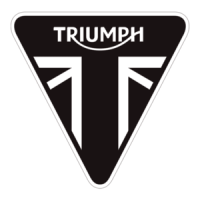

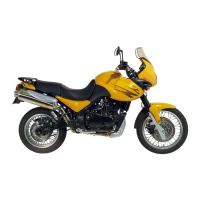
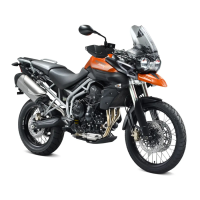
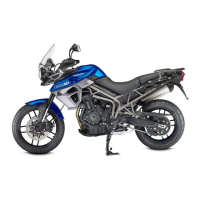
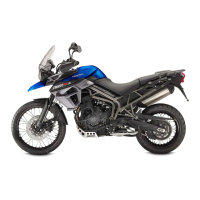


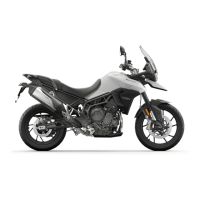
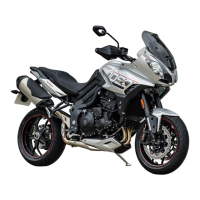


